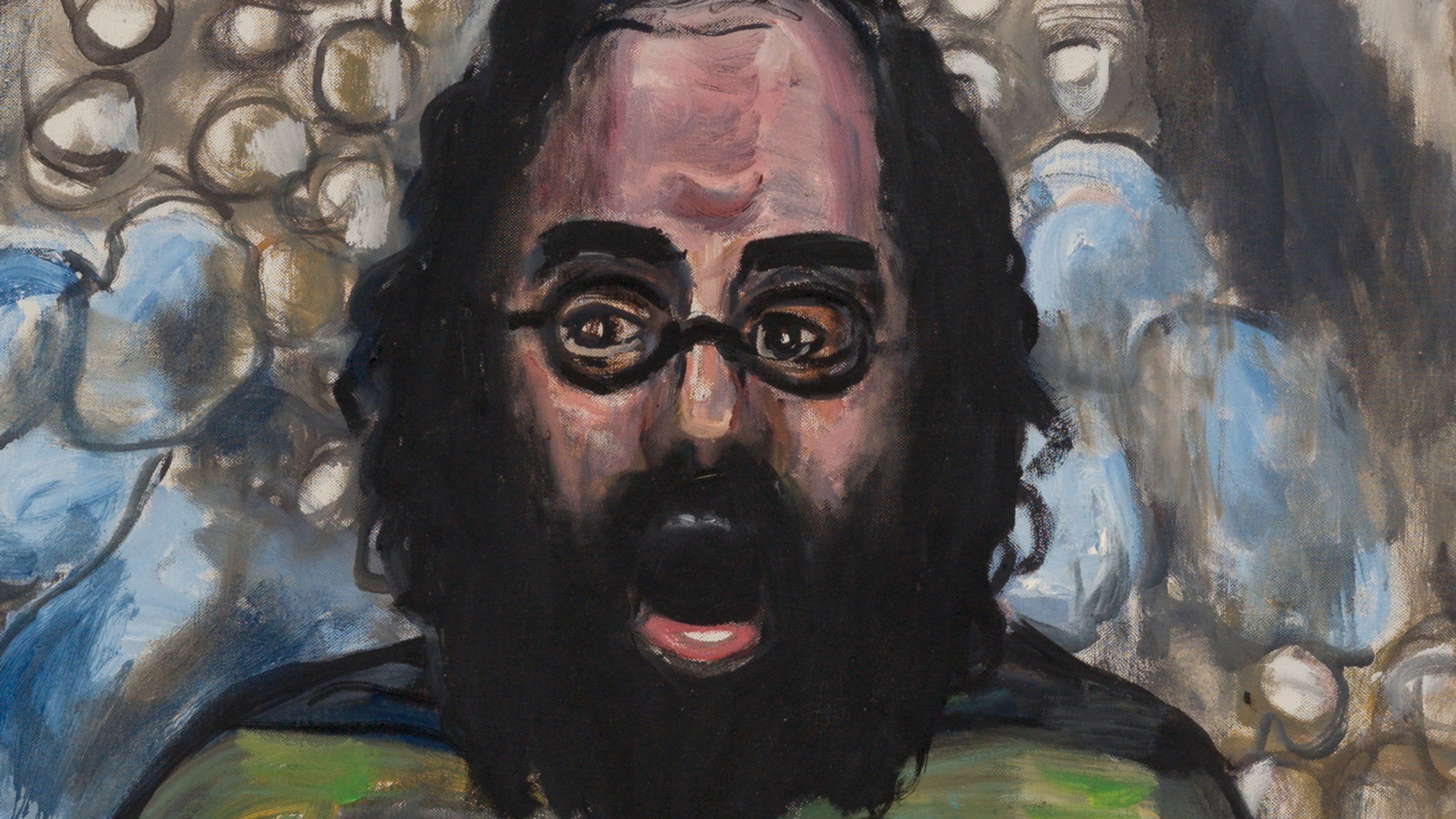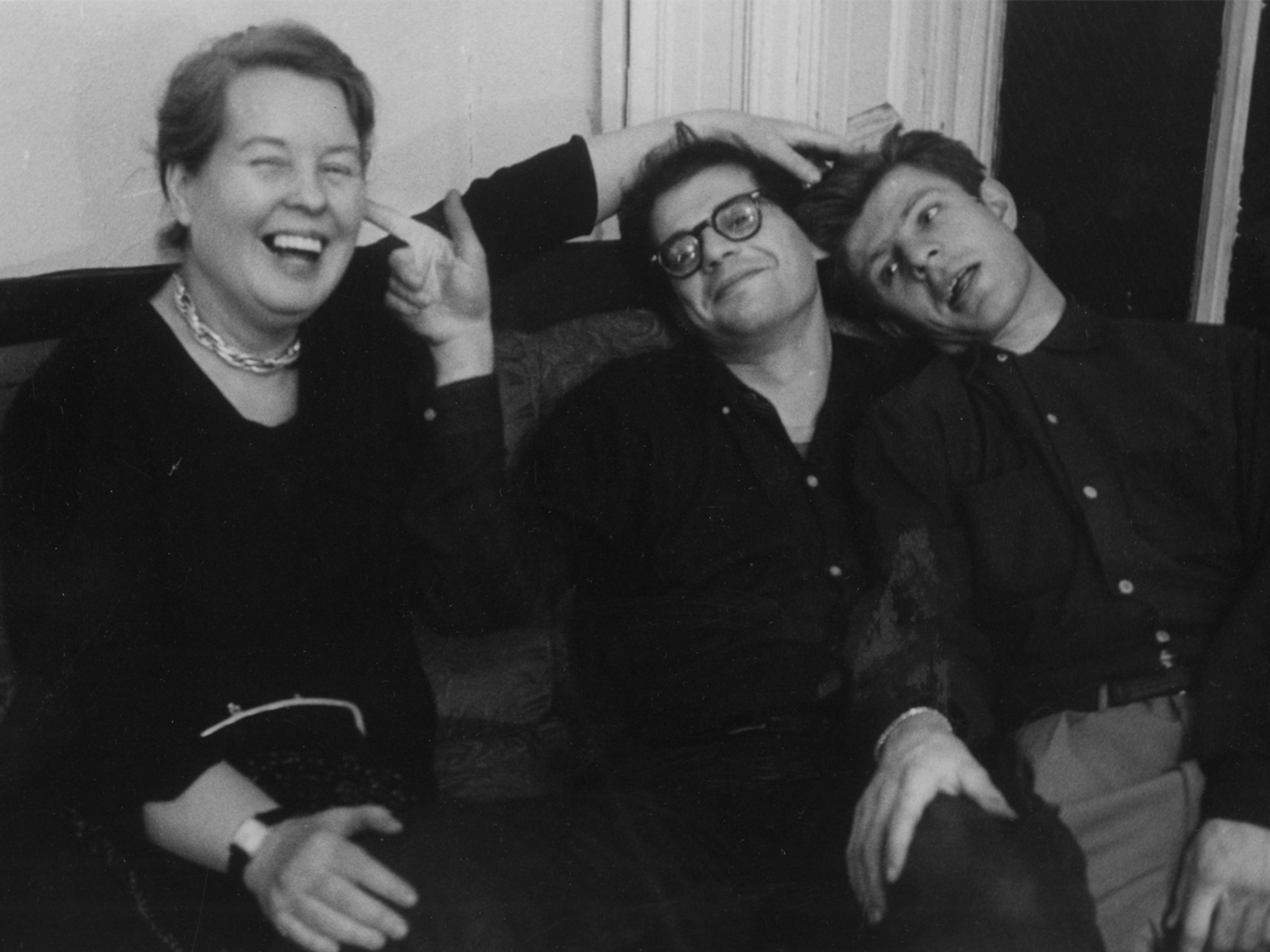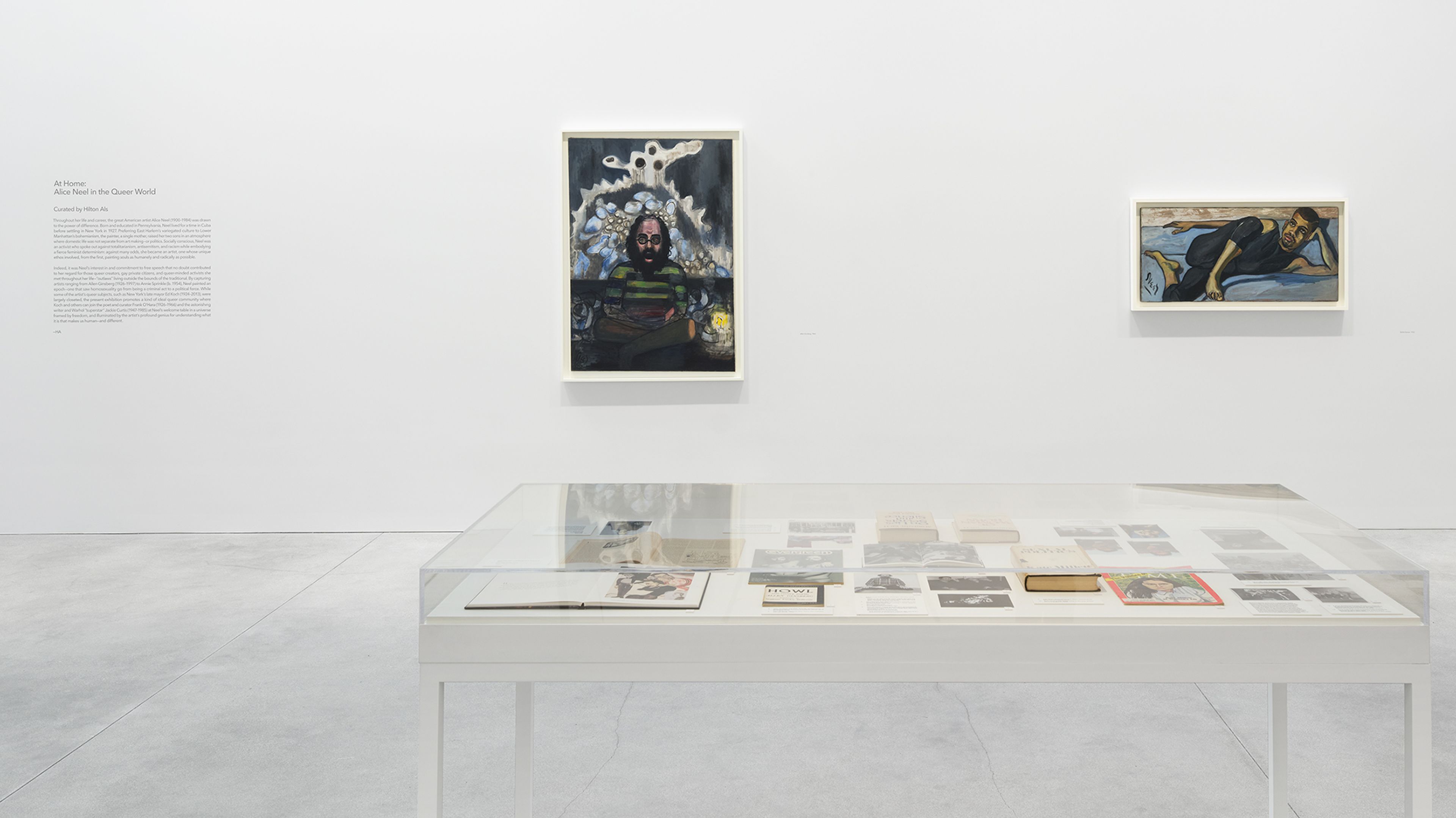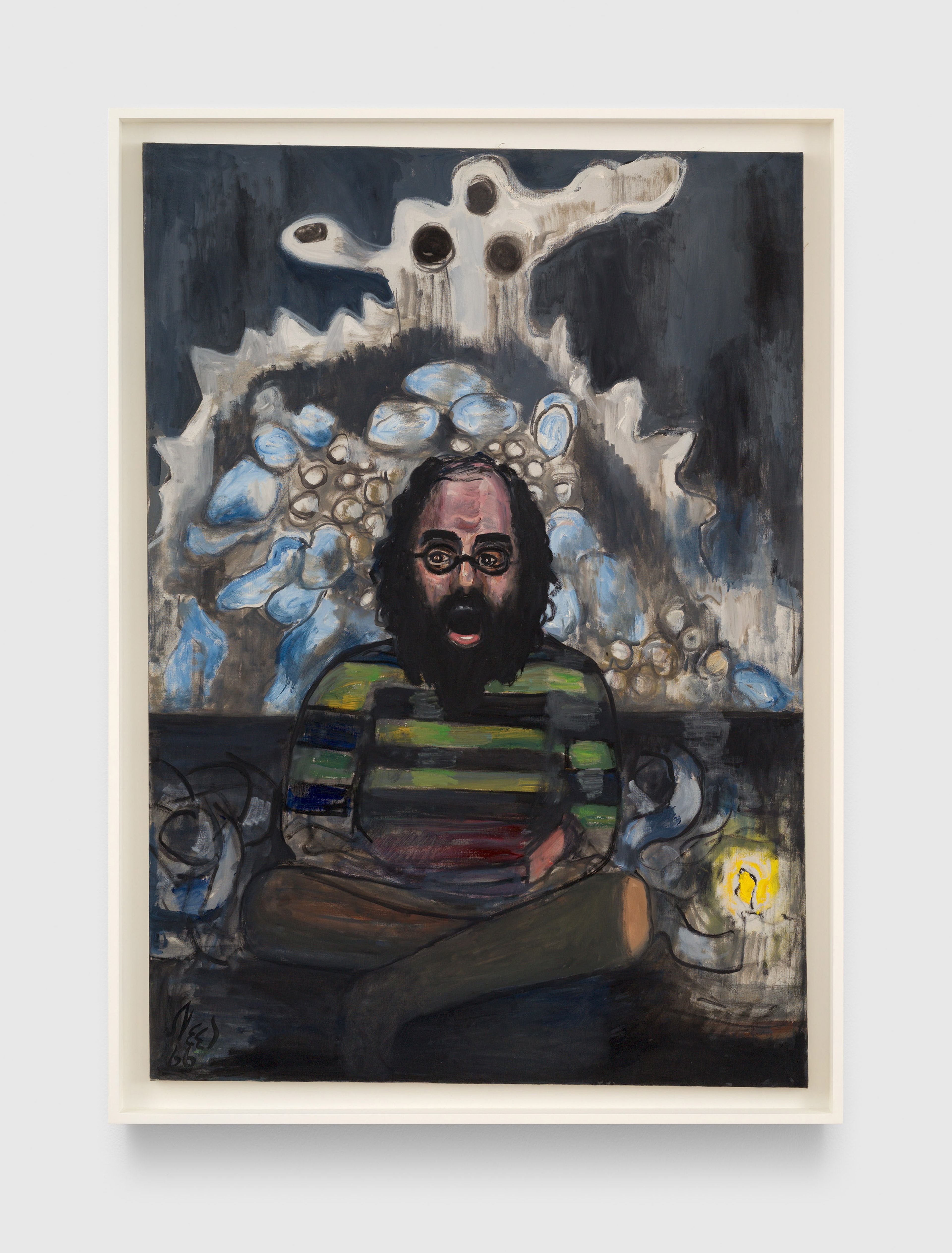Exceptional Works: Alice Neel
Allen Ginsberg, 1966
Oil on canvas 50 x 35 1/4 inches 127 x 89.5 cm


Allen Ginsberg in Kansas, 1966
Ginsberg was a leading member of the famous Beat generation of writers who emerged around 1944 out of Columbia University. He moved to San Francisco in the 1950s, and in 1956 he published his best-known poem, “Howl,” to both great acclaim and controversy; in 1957 there was an obscenity trial against the poem due to its homosexual content, much of which was based on Ginsberg’s relationship with the poet Peter Orlovsky (1933–2010). In his work, Ginsberg pioneered a colloquial, vernacular style and wrote openly about his identity, gay desire, and drug use—in effect challenging the obscenity laws of the time and paving the way for younger marginalized artists and writers to express themselves freely.

Alice Neel with Allen Ginsberg and Peter Orlovsky on the set of Robert Frank and Alfred Leslie’s Pull My Daisy, 1959. Artwork © John Cohen Trust, courtesy L. Parker Stephenson Photographs, New York
Throughout her career, Neel was committed to depicting the human condition, painting people from many walks of life. Her subjects include politicians, philanthropists, writers, performers, and artists.
Neel met Ginsberg in 1959 on the set of Robert Frank and Alfred Leslie’s film Pull My Daisy, in which they appeared alongside other Beat poets and artists. “I looked like a conventional American type,” Neel recalled. “I went (to the first day of shooting) and there was Allen Ginsberg. So I said, ‘Oh, are you taking the part of Allen Ginsberg?’ And he said, ‘No I am Allen Ginsberg.’” At the memorial service held for Neel after her death at the Whitney Museum of American Art in 1985, Ginsberg read his poem "White Shroud."
Alice Neel, Allen Ginsberg, 1966 (detail)

Allen Ginsberg, second from left, joins psychologist Dr. Timothy Leary on stage for the multimedia presentation "Illumination of the Buddha," The Village Gate, New York, December 6, 1966. Photo by Fred W. McDarrah. MUUS Collection via Getty Images
In this rarely seen work by Neel, the artist painted from memory after seeing Ginsberg perform with Dr. Timothy Leary in 1966. Neel was attracted to her sitters’ individuality and the details of their mannerisms, poses, and choice of clothing. Here, the poet sits cross-legged next to a glowing candle, his torso and open-mouthed face surrounded by abstract, orblike forms. The composition mimics the gritty, improvisational, and often frenetic style of poetry for which Ginsberg and the Beats were known, and speaks to the hallucinatory quality of their performances at the time.

Installation view, At Home: Alice Neel in the Queer World, David Zwirner, Los Angeles, 2024

Inquire about Works by Alice Neel
